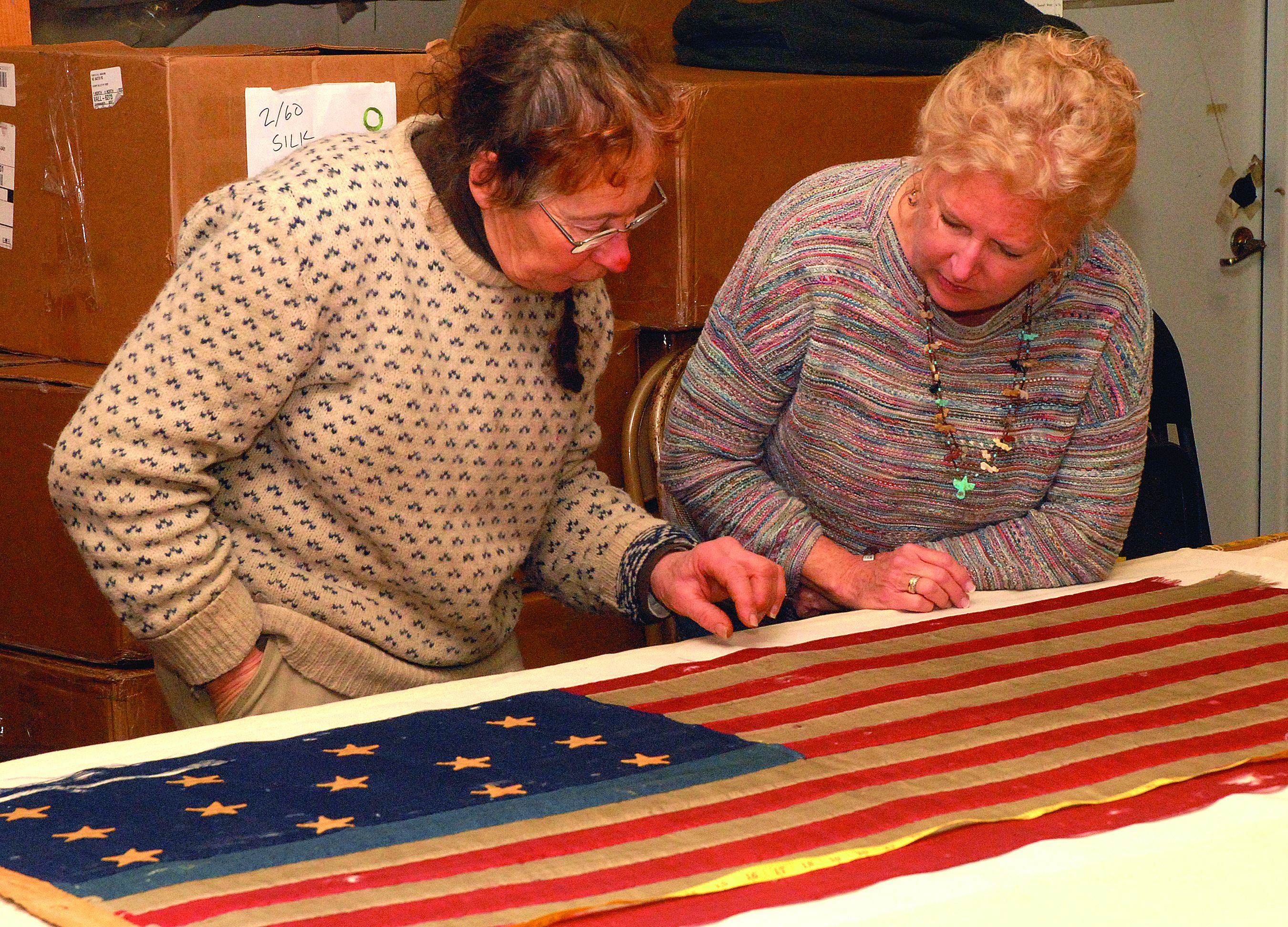Subscriptions
Menu
Advertisements
On the hunt for history: Flag still a mystery
3/30/2023 |
By Patsy Nicosia |

Is it or isn’t it?
An 18th century flag from Colonial America?
Or…?
In the end, all forensic textile expert Rabbit Goody can say is that it’s not not a 13-star from about the 1790s to the 1800s from Philadelphia.
Because that’s the way it always goes.
And that’s fine with Michelle Grimes of Littleton, Colorado who brought the family heirloom to Ms. Goody’s Thistle Hill Weavers in Cherry Valley Thursday for a better look at its history.
“Nothing screams it’s not real,” Ms. Goody said after a day spent examining the 4-5-4—the star pattern—flag.
“But that’s always one of the things about this: I can never say for sure it is, I can only say for sure it’s not.”
The fact that something is not—in this case, not a circa 1790s flag--could be confirmed, for example, by the fact that it was made with dyes or fabrics—even thread—that weren’t in use at the time.
Traces of pollen or salt can also be clues, though flag historians, maybe more than any other historians, disagree on the meaning of some of those tiny details.
“Basically, the fabric can certainly be considered 18th century, but the flag has definitely been remade,” not uncommon at all, Ms. Goody said.
“Was it 1799 or 1801?” something that could make all the difference in determining its value?
“I just don’t know.”
Ms. Grimes, a retired fourth-grade teacher, inherited the flag, which has been in her family for three generations.
Delving into its past is something she’s wanted to do for years, it part to know it’s real value, she said, but mostly to understand how significant it is in America’s heritage.
Thursday, she helped Ms. Goody carefully measure the hand-sewn flag—the length and width of the stripes, the hoist—that’s the section a flag hangs from—and the canton—the blue background for the 13 stars, arranged in three rows of 4, then 5, then 4 stars—a pattern that tends to be naval, Ms. Goody said.
They noted the fact that the grommets on the hoist were hand-sewn, that the stripes of bunting at both the top and the bottom of the flag were red, “Which is important. It means something,” Ms. Goody said, and that the canton had been altered.
Then, they carefully clipped the threads used to sew the flag to a piece of muslin for display 35 years ago so they could see the back side, looking for details and irregularities.
“The irregularities are what’s going to help me identify this,” Ms. Goody said, “and this is very irregular.
Among those irregularities: the fact that the hoist has been replaced and the far end of the flag is hemmed—something that’s not typical.
“I’m probably going to say that it’s made up of pieces of another flag. That’s not at all unusual, Flags get remade and remade and remade,” Ms. Goody said.
Other historical flag facts: flags were often pieced together from other flags, the Betsy Ross story, like much of American history, is a caricature; and how and where a flag is frayed—as well as how open the weave is--is a clue to whether it was flown on a ship.
Or not.
Ironically, Ms. Goody said she’s not especially interested in flags; it’s all about “how objects fit into our culture and why did they survive,” she said.
“What made this 13-star flag so important it would be passed down? Can we place it in a larger context? What it’s worth to us is understanding. And this flag has so many interesting parts.”
So, 1796?
Or 1804?
“I can’t say. I’m never able to say. I can’t prove it’s not and so I can’t say it is. It’s frustrating, but it’s also fascinating.”
Something that could help solve the mystery?
Written documentation from Ms. Grimes family or evidence of a connection to say, a particular ship.
Ms. Grimes is fine with not knowing.
“My children are just so thrilled I’m doing this,” she said. “They grew up with it in their home,” as did she. “Now we know more even if we don’t know it all. I’ve learned so much.”









